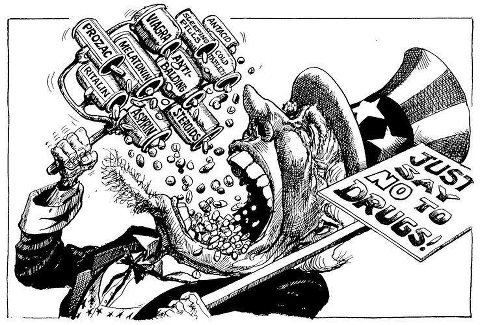Saying no to Uncle Sam
Post on: 23 Июнь, 2015 No Comment

JohnSpence
BOSTON (MarketWatch) — Leveraged exchange-traded funds that short U.S. Treasury bonds got a nice pop last week from a jump in yields, and the ETFs could see further gains if investors lose their thirst for government-backed debt.
In a dramatic sell-off Wednesday in government bonds, yields on 10-year notes surged above 3.7% at one point to their highest levels since November. That upheaval in the bond markets, which some traders said was exacerbated by mortgage-related selling, ignited fears that inflation is on the horizon as a result of the government’s efforts revive the ailing financial system.
Other forces driving interest rates higher included worries there won’t be enough demand to meet massive auctions of Treasury bonds down the line, and hopes that the global economic picture may be brightening.
Nervous investors have piled into U.S. government debt during the credit crisis, sending yields to historic lows and sparking talk of a bubble in Treasury securities. Bond yields and prices move in opposite directions.
A mixture of unprecedented Treasury-bond offerings and government support to troubled financial institutions and banks will cause the total amount of Treasurys and other government-backed debt to soar from roughly 25% of the total investment grade bond market in 2007 to 80% by 2010, according to a recent report from investment manager BlackRock Inc.
As a result, the fixed-income market today is dominated by lower-yielding government securities, and it is our view that it will remain this way until the demand for private borrowing picks up, it added.
Bearish bond ETFs
Investors who short-sell securities are essentially betting that their prices will fall. The leveraged ETFs that short Treasurys have benefited this year as yields on 10-year notes have marched steadily higher since bottoming out around 2%. Investors hadn’t seen 10-year rates that low since the 1950s.
The ProShares UltraShort Lehman 20+ Year Treasury TBT, +0.61% was up 51.4% this year through May 28, according to Morningstar Inc. The ETF aims for daily performance that is twice, or 200%, of the inverse return of a long-term Treasury bond index, minus fees and expense expenses. Launched in May 2008, the ETF has an expense ratio of 0.95% and holds more than $4 billion in assets. It is among the top ETF performers in 2009.
A lot of investors think the next bubble is in Treasurys, so this ETF can let investors take advantage of that, or hedge their bond portfolios, said Michael Sapir, chairman of the ETF’s portfolio manager, ProShares, in an interview. It’s been a home run this year in terms of performance and assets.
Despite the fund’s recent rally, it was hammered in late 2008 when stocks crashed while investors rushed into Treasury bonds and bid prices higher.
When using juiced-up funds such as the ProShares ETF, investors need to be aware that the leverage may not line up over longer intervals.
Due to the compounding of daily returns, returns over periods other than one day will likely differ in amount and possibly direction from the target return for the same period, according to ProShares. Investors should monitor holdings consistent with their strategies, as frequently as daily.
In volatile markets, long-term performance can become even more skewed, so the ETF might not be appropriate for buy-and-hold investors.
The Bethesda, Md.-based investment firm also oversees the ProShares UltraShort 7-10 Year Treasury PST, +0.21% which tracks an index with a shorter duration.
Meanwhile, competitor Direxion sponsors a pair of bearish ETFs that provide even more leverage at 300% on a daily basis: Direxion Daily 10-Year Treasury 3x Shares TYO, +0.47% and Direxion Daily 30-Year Treasury Bear 3x Shares TMV, +0.99% The ETFs were listed in April.

Recognizing risks
Aside from the perils of leverage, investors should be cognizant of other specialized features of these ETFs.
This fund does not enjoy the same tax efficiency as a traditional ETF, wrote Scott Burns, Morningstar’s director of ETF analysis, in his latest report on ProShares UltraShort Lehman 20+ Year Treasury.
This is due to the tax treatment of the derivatives, futures, and swap contracts that the fund uses to meet its mandate of providing inverse returns; all positions are marked-to-market at year-end, so capital gains cannot be deferred and profits are taxed as short-term gains, he said.
Aside from these tax and credit-risk concerns, investors who are bearish on Treasury bonds can get hurt if deflation persists and investors shun risk. A rising U.S. dollar would also take a toll.
Of course, for those thinking about shorting Treasurys, the ‘when’ becomes almost as important as the why.’ So keep the timing of these events in mind, Burns warned.
There are other ETFs that investors can use to position for rising inflation and a weaker greenback.
For example, iShares Lehman TIPS Bond Fund TIP, -0.32% and SPDR Gold Trust GLD, +0.14% are seen as inflation-fighters.
Also, a host of currency ETFs such as PowerShares DB U.S. Dollar Index Bearish Fund UDN, -1.03% let investors take a position against the dollar.














